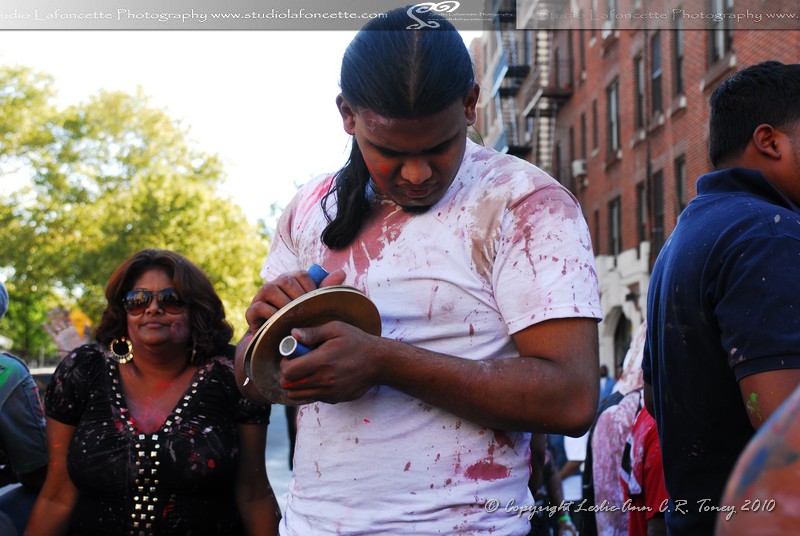 Member of a Tassa band during Jouvert at Labour Day Carnival, Brooklyn, New York
Member of a Tassa band during Jouvert at Labour Day Carnival, Brooklyn, New York
In blogging de carnaval I’ve focused on the African contributions to the structure and foundation of Trinidad & Tobago carnival, but it would be remis of me to suggest that it is a mono-culture carnival. East Indians comprise 40% of the population in Trinidad & Tobago. Our carnival is partly an expression of people’s fight for freedom and to retain important elements of their culture. East Indians were the largest group of indentured servants brought to Trinidad after slavery. Unlike Africans they were allowed to maintain their languages, religions and culture, which exist today in T&T. However, indentureship was no paradise. People came out of necessity. They came because they were living in harsh, destitute conditions in India, and they were led to believe they were coming to a land of milk and honey (sounds familiar). As described in Dr. Liverpool’s book, Rituals of Power and Rebellion*, East Indians lived in rural settings but met the squalor of barack ranges, lack of privacy and disease similar to the urban baracks populated by Africans. The planters used them as a means to keep wages down, Africans saw East Indians as a threat to wages, and East Indians looked down on Africans, and tended to keep themselves separate. With a rise in the East Indian population however, they were more apt to celebrate their own festivals, particularly Hosein, which was also supressed by the British government, and met with opposition. Carnival was an expression of freedom and an opportunity to relieve the stress, the rage, the pain at the harsh conditions of life in the colony. Over time East Indians carved their own way into the carnival, particularly in non-urban regions such as the San Fernando carnival, where Lionel Jaggesar his wife Rosemarie Kuru Jaggesar, and Ivan Kalicharan are two noteable names in modern mas. Additionally, although not entirely their domain, “Indian” (Native American) mas is often portrayed by East Indians. Moreover, tassa drummers are a frequent addition to the music – be it as a part of a rhythm section on as an individual component in adult mas, with the use of abeer (the powder dye used for the Hindu festival of Holi (Pagwa) during jouvert) or in mas portrayals.
Liverpool, pp 254-258. http://www.amazon.com/Rituals-Power-Rebellion-Tradition-1763-1962/dp/0948390808/ref=sr_1_1?ie=UTF8&s=books&qid=1300392468&sr=8-1